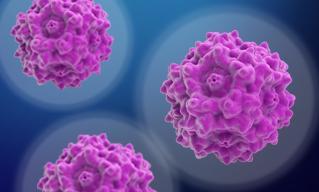Limb-girdle muscular dystrophy (LGMD) is an umbrella term for a group of rare neuromuscular diseases that cause weakness and wasting of the muscles. There are approximately 30 subtypes, each with a unique underlying genetic cause.
How do the many subtypes differ when it comes to disease progression and severity? A Sarepta-sponsored study is helping to shed light on this question and increase understanding of the disease to enable the development of new treatments.

Journey is a clinical outcomes assessment study, also referred to as a natural history study. It is designed to collect medical history, clinical tests, patient-reported outcomes and functional assessments on individuals living with a subset of LGMD subtypes. Preliminary data from Journey was presented at the 2023 International Congress of the World Muscle Society. (View the poster presentation here.)
To explain both the significance of Journey and the initial data, we spoke to Jesantha Coy, executive director and global program team leader at Sarepta, and Linda Lowes, PT, PhD, principal investigator of the study. Dr. Lowes specializes in the assessment of neuromuscular dystrophies and is a principal investigator in the Center for Gene Therapy, Research Institute at Nationwide Children's Hospital and research professor of Pediatrics at The Ohio State University.
Q: First, a refresher: What is natural history?
Coy: A natural history study focuses on understanding and documenting the natural course of a disease. It’s a roadmap that shows how a disease typically behaves and changes over time, without treatment. Natural history studies provide important baseline information that investigators can use in designing clinical trials for potential new treatments. Natural history is especially important in rare diseases like the LGMDs, where few people are affected and there are little data on disease characteristics and progression.
Q: And what is Journey?
Coy: Journey is a global, multicenter, longitudinal natural history study. It does not involve the use of an investigational drug but rather studies the natural progression of four LGMD subtypes: LGMD type 2C/R5, LGMD type 2D/R3, LGMD type 2E/R4 and LGMD type 2A/R1.
For up to three years, study participants who have a confirmed genetic diagnosis of one of these subtypes will be followed to evaluate mobility and pulmonary function, with the same measurements collected during each of their clinical study visits. The data collected will provide valuable information about how muscle strength, breathing and heart function can change over time.
Q: Why is natural history data especially important to LGMD researchers?
Coy: It’s estimated that LGMD collectively affects only about 1.63 per 100,000 people globally. As a result, there are little data on how the different subtypes progress or affect quality of life.
What are ‘the Sarcs’?
- There are approximately 30 different LGMD subtypes, each with a unique underlying genetic cause.
- Most of the genes affected in LGMD are involved in the production of certain muscle proteins.
- Four subtypes – LGMD2C/R5, LGMD2D/R3, LGMD2E/R4 and LGMD2F/R6 – are the result of a deficiency of one of the sarcoglycans, a group of proteins responsible for preventing muscle damage during contraction.
- The sarcoglycanopathy subtypes are estimated to account for 15-20% of all LGMD cases.
- The Journey natural history study includes three of the sarcoglycanopathy subtypes: LGMD2C/R5, LGMD2D/R3 and LGMD2E/R4.
What is calpainopathy?
- LGMD2A/R1 is the most common LGMD subtype, representing an estimated 20 percent of all LGMD cases.
- LGMD2A/R1 is sometimes referred to as calpainopathy.
- The calpain 3 gene encodes the calpain 3 enzyme, which is involved in the maintenance of muscle function.

Therapy, Research Institute at Nationwide
Children's Hospital
Q: If no new treatments are being evaluated as part of Journey, how can the study speed new drug development?
Lowes: When a patient population is very small, as is the case with the LGMDs, it can be challenging to recruit enough patients to have a large enough study to include a placebo, or control, arm of the study. And that can delay research studies and progress toward new treatments.
In some cases, natural history can serve as a control arm. It can provide researchers with a reference point to assess whether an investigational therapy is working by allowing them to compare the expected disease progression without treatment to the progression with treatment. When we’re talking about a progressive disease, time is of the essence. Natural history may play a critical role in getting effective treatments to LGMD patients faster.
Q: The study has generated only baseline results so far. What’s interesting about this preliminary data?
Coy: It gives us a starting point, and even the baseline data teaches us about the characteristics and progression of the different subtypes. We can discern how long from disease onset upper body strength becomes affected and when respiratory involvement becomes more prevalent. These milestones are important not only for researchers, but also individuals living with the LGMDs and healthcare providers.
Q: If there aren’t any approved LGMD treatments, how can natural history data lead to better care now?
Lowes: Having this data will help healthcare providers better understand subtypes so they can anticipate patient needs. If natural history shows us that one subtype has more respiratory involvement than another, we can be alert to potential complications and be ready for early intervention.
While nobody wants to plan for needing a wheelchair, having a clear grasp of the disease progression and recognizing the point at which an individual might start having challenges walking unaided equips people to take proactive measures. It can empower them to create strategies for maintaining independence, such as making timely home modifications.
Having more information about the various subtypes also might motivate individuals with LGMD to undergo genetic testing. In the past, there were few clinical trials and providers had no treatments to offer. As a result, some LGMD patients felt there wasn’t much benefit to learning their subtype, which can be done rather easily through genetic testing.
Now, when someone receives a clinical diagnosis of LGMD based on signs and symptoms, learning their specific subtype can provide them with deeper knowledge and a better roadmap for navigating their condition. Genetic confirmation may also allow the patient to participate in future clinical trials and access potential future treatments.
There are so many ways Journey might impact care – now and, hopefully, down the road with new treatments. But we can’t do it without patients’ participation in the study, and I want the community to know how deeply grateful I am.
Learn more
- Read our limb-girdle muscular dystrophy fact sheet.
- Learn more about LGMD subtypes and genetic testing programs at limbgirdle.com.
- Learn more about Journey here.



